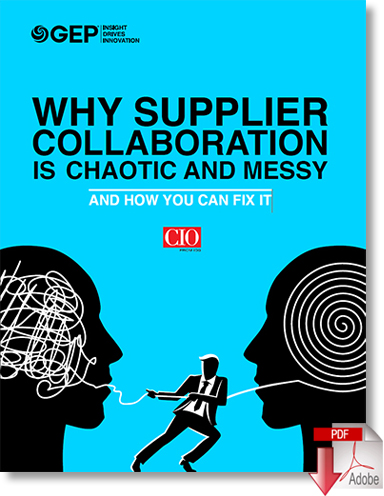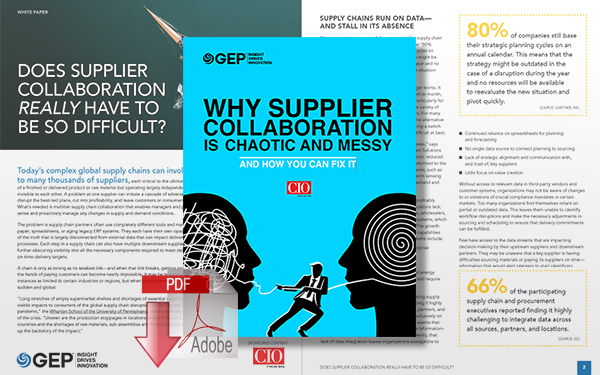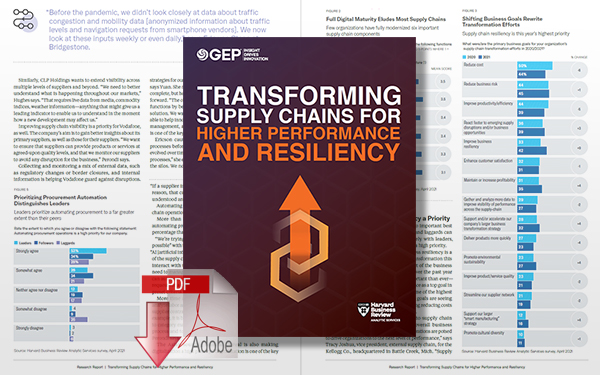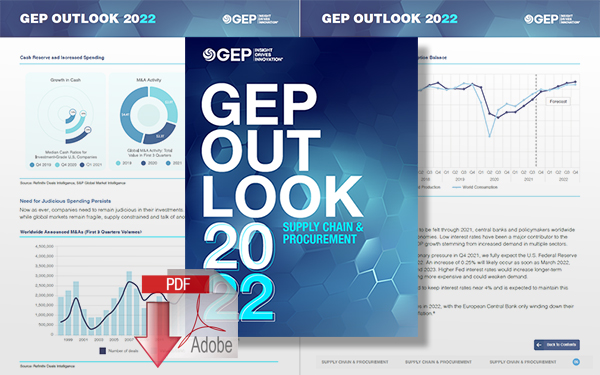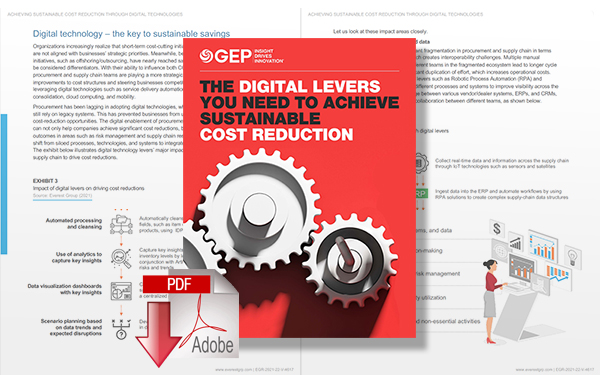Top 5 Supply Chain Processes That Need Better Collaboration

Collaboration is critical in getting goods speedily to market, but also in achieving rapid response and effective problem-solving when the inevitable humps and bumps in global trade occur.
Five Ways Collaboration Can Ease Supply Chain Headaches in a Post-COVID-19 Environment
Collaboration has always been a challenge in the supply chain. That’s because supply chains are formed from ever-changing, far-flung sets of partners with - at best - intersecting interests.
They also have different specializations. A Tier-1 supplier making auto parts lives in a very different world of expertise than a 3PL, shipping carrier, or warehouse operator.
These different perspectives and skillsets, covering a wide range of focus, inevitably lead to silos.
We’ve learned much during the COVID-19 pandemic, one lesson being that collaboration is essential for a smooth-running, responsive supply chain. This remains important now, as logistics costs, volatile commodity prices, and inflation can add time and cost to the process.
Collaboration is critical in getting goods speedily to market, but also in achieving rapid response and effective problem-solving when the inevitable humps and bumps in global trade occur - whether natural disasters such as the current pandemic, labor unrest, or shifts in consumer trends.
The never-ending challenge is to figure out a way to efficiently break down silos and ensure timely, clear communication so that all supply chain partners are aligned. But there are also tools and processes that need to be established and
made available for collaboration to flourish.
However, effective collaboration can’t mean everyone talking to everyone about everything. That would add an intolerable burden on business. The trick is to identify the hotspots where collaboration can do the most good and go after those.
Here’s where you might want to focus your collaborative efforts.
1. Supply Order Collaboration
Placing orders with a supplier may sound easy - you place an order and the supplier ships it to you. But in the real world, it’s a bit more complex.
There’s a lot of back-and-forth communication needed, and the devil is in the details:
- Is the order being received in the right way?
- How do you know that the order is being worked on now?
- When will you receive the shipment?
- What if you need to change the order?
- Will, that produce duplicates, or lost or delayed orders?
Multiply this by all the components from all your suppliers, and the complexity quickly escalates. But if suppliers and manufacturers have solid, pre-agreed protocols for collaboratively communicating exactly what’s going on with an order, including necessary lead times, and with any hiccups flagged for exception management, the process becomes far smoother.
2. Vendor-Managed Inventory
You need to have accurate, real-time visibility of VMI information in order to optimize supply planning. Companies need ways to address vendor-managed risk and improve efficiency between the buyer and the vendor.
A strong collaborative process with well-managed information sharing is critical for success.
Technology is vital here to align with each other on inventory stock details and ongoing replenishment planning. Collaboration avoids bottlenecks at the last part of the pipeline.
3. Forecast Collaboration
Too often, a manufacturer doesn’t actively share forecasting of production volume, and therefore anticipated supply needs, with their suppliers. They tend to panic, especially when it comes to forecasting months ahead, pad orders to suppliers accordingly, then change their minds nearer the time of delivery.
As a result, the supplier is second-guessing what the manufacturer will really need, leading to potential supply interruptions. A monthly or even weekly interface where the manufacturer shares its actual anticipated requirements, in good time, allows a vendor to plan more realistically for its own operations, and quickly respond to changes.
4. Capacity Collaboration
In a business environment, it’s important to plan capacity so you know how much labor to hire, and what machinery and production space will be needed. But having visibility into your supplier’s capacity can also be very helpful. This is a next-level form of collaboration because it could be described as cooperation: knowing whether the supplier’s materials are allocated to you as a customer in time for it to produce supplies to meet your production schedule.
This kind of interface with suppliers allows you to do a better job of your own capacity planning. Without information being shared in a timely fashion, the supplier side can be blindsided, and not have enough time to fulfill your order.
The benefits of this type of collaboration can often be very tangible: suppliers with smooth production can help eliminate delays in setting up production capacity and tend to have lower costs, which they can then pass on to you.
5. Quality Management
High-end products such as computers or smartphones require strict quality control. Any problems with quality, or identified requirements for higher-quality parts, need to be shared with suppliers as soon and as effectively as possible - for example, by communicating immediately back to the supplier how a component performed when it was first installed.
In the post-COVID-19 world, consumer tastes and demands will turn on a dime. Collaboration that is based on using workflow-oriented technology is critical for success. It means you can align quality levels with your supplier quickly, so you can in turn align the quality of your products with the market.
How GEP Enables Supply Chain Collaboration
GEP provides a uniquely blended mix of software and services to enable effectively, intuitive collaboration among all partners in the supply chain. Customers make use of its unified platform to effectively and efficiently collaborate on critical operational information.
GEP works with clients to drive process improvement and alleviate cultural resistance to change and is dedicated to enabling better supply chain efficiency through software that’s powered by artificial intelligence. GEP is keenly aware that while one barrier to collaboration is the reluctance of businesses to share information, another is figuring out exactly what information should be shared. GEP software focuses on what is critical.
Putting everything on one platform - with intelligent filtering and predictive capabilities - means it’s easy to bring suppliers into the loop without drowning them in non-critical data. GEP software helps identify rare insights into how the supply chain is functioning as a whole, and how to improve response times to market changes.
GEP helps create an information-sharing environment that works well for everyone, empowering partners to collaborate and improve business outcomes across the board. By providing an easily configurable workflow, information is exchanged via a managed platform, so tasks can flow efficiently between parties. Gaps and problems can be discovered early and corrected quickly.
For more information, visit gep.com/software
Related Resources
Why Supplier Collaboration Is Chaotic and Messy (And How You Can Fix It)
This paper outlines strategies for supply chain professionals looking to strengthen their supplier relationships to better manage disruption. Download Now!
Transforming Supply Chains for Higher Performance and Resiliency
This study from Harvard Business Review Analytic Services commissioned by GEP explores the digital status quo of supply chains today, and how enterprises can and must revamp their supply chains to thrive in a never-normal world. Download Now!
GEP Outlook 2022 - Supply Chain & Procurement: Key Trends, Challenges, and Opportunities
Get actionable insights to effectively deal with disruption and uncertainty and learn supply chain and procurement strategies that can help your business thrive in the new normal. Download Now!
The Digital Levers You Need To Achieve Sustainable Cost Reduction
This white paper highlights the challenges and pressures that have forced enterprises to rethink their traditional approaches to cost optimization. Download Now!
More Resources from GEP
Article Topics
GEP News & Resources
GEP Procurement & Supply Chain Tech Trends Report 2024 How Procurment and Supply Chain Leaders Should Handle Supply Chain Disruptions Optimizing Business Outcomes by Investing in Sustainable Supply Chains and Procurement Optimizing Direct Material Sourcing with a Unified, Extensible Source-to-Pay Platform Generative AI in Procurement Navigating the Cost-Plus World of Supply Chains How to Avoid the Pittfalls of Contract Management in Telecom and High-Tech More GEPLatest in Supply Chain
Dollar Tree’s Oklahoma Distribution Center Decimated by Tornado The Era of Self-Driving Tractor-Trailers Set to Begin Is the Trailers as a Service (TaaS) Model Right For Your Business? Why Grocery Shoppers are Leaving Stores to Buy Their Food Online Is There a Next Generation of Truckers? Data Reveals Grim Outlook A Look at Baltimore’s Key Bridge Collapse—One Month Later European Parliament Passes Law on Supply Chain Accountability More Supply Chain

